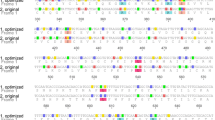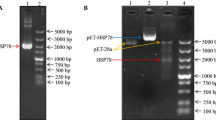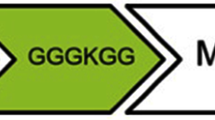Abstract
Hantavirus (HV) infection leads to a kind of severe systematic syndrome, hemorrhagic fever with renal syndrome (HFRS). Heat shock proteins (HSPs) can be used as adjuvants assisting soluble antigens to produce specific targets which can be attacked by cytotoxic T lymphocytes. For further research on HFRS vaccine, this study aimed to express Hantaan virus nucleocapsid protein (HTNV NP)-HSP70 fusion protein in COS-7 cells. First, an HTNV S gene encoding NP was amplified by PCR with a mutated termination code and cloned into eukaryotic expression vector pCDNA3.1(+), into which the full-length hsp70 gene had already been inserted, to form the S-hsp70 fusion expression vector pCDNA3.1(+)/S-hsp70. Then this recombinant plasmid was transfected into COS-7 cells by liposome, and eukaryotic expression of NP-HSP70 fusion protein was detected by immunocytochemistry and western blot. The results show that the eukaryotic expression vector pCDNA3.1(+)/S-hsp70 was successfully constructed and the NP-HSP70 fusion protein was effectively expressed in COS-7 cells. This study demonstrates that the NP-HSP70 fusion protein was expressed effectively from the pCDNA3.1(+)/S-hsp70 vector in a eukaryotic system and thus provides a basis for using this plasmid as a new DNA vaccine against HV infection.



Similar content being viewed by others
References
Asada H, Tamura M, Kondo K, Dohi Y, Yamanishi K (1988) Cell-mediated immunity to virus causing hemorrhagic fever with renal syndrome: generation of cytotoxic T lymphocytes. J Gen Virol 69:2179–2188
Beláková J, Horynová M, Krupka M, Weigl E, Raska M (2007) DNA vaccines: are they still just a powerful tool for the future? Arch Immunol Ther Exp (Warsz) 55:387–398
Hauser H, Chen SY (2003) Augmentation of DNA vaccine potency through secretory heat shock protein-mediated antigen targeting. Methods 31:225–231
Lu S, Wang S, Grimes-Serrano JM (2008) Current progress of DNA vaccine studies in humans. Expert Rev Vaccines 7:175–191
Mayer MP (2005) Recruitment of Hsp70 chaperones: a crucial part of viral survival strategies. Rev Physiol Biochem Pharmacol 153:1–46
Multhoff G (2006) Heat shock proteins in immunity. Handb Exp Pharmacol 6:279–304
Przepiorka D, Srivastava PK (1998) Heat shock protein-peptide complexes as immunotherapy for human cancer. Mol Med Today 4:478–484
Ransay AJ, Ram shaw IA, Ada GL (1997) DNA immunization. Immunol Cell Biol 75:360–363
Rice J, Ottensmeier CH, Stevenson FK (2008) DNA vaccines: precision tools for activating effective immunity against cancer. Nat Rev Cancer 8:108–120
Schild H, Arnold-Schild D, Lammert E, Rammensee HG (1999) Stress proteins and immunity mediated by cytotoxic T lymphocytes. Curr Opin Immunol 11:109–113
Schmoljohn CS, Jenning GB, Hay J (1986) Coding strategy of the S genome of Hantaanvirus. Virology 155:633–643
Spier RE (1995) Editorial: nucleic acid vaccines. Vaccine 13:131–132
Srivastava PK, Menoret A, Basu S, Binder RJ, McQuade KL (1998) Heat shock proteins come of age: primitive functions acquire new roles in an adaptive world. Immunity 8:657–665
Woo GJ, Chun EY, Kim KH, Kim W (2005) Analysis of immune responses against nucleocapsid protein of the Hantaan virus elicited by virus infection or DNA vaccination. J Microbiol 43:537–545
Yao JS, Kariwa H, Takashima I, Yoshimatsu K, Arikawa J, Hashimoto N (1992) Antibody-dependent enhancement of hantavirus infection in macrophage cell lines. Arch Virol 122:107–118
Author information
Authors and Affiliations
Corresponding author
Additional information
Juan Gao and Bicheng Zhang contributed equally to this work.
Rights and permissions
About this article
Cite this article
Gao, J., Zhang, B., Yang, S. et al. Construction and Expression of a Eukaryotic Expression Vector Containing a Fusion Gene of the Hantaan Virus S Gene and Hsp70 Gene. Curr Microbiol 58, 30–34 (2009). https://doi.org/10.1007/s00284-008-9261-2
Received:
Revised:
Accepted:
Published:
Issue Date:
DOI: https://doi.org/10.1007/s00284-008-9261-2




